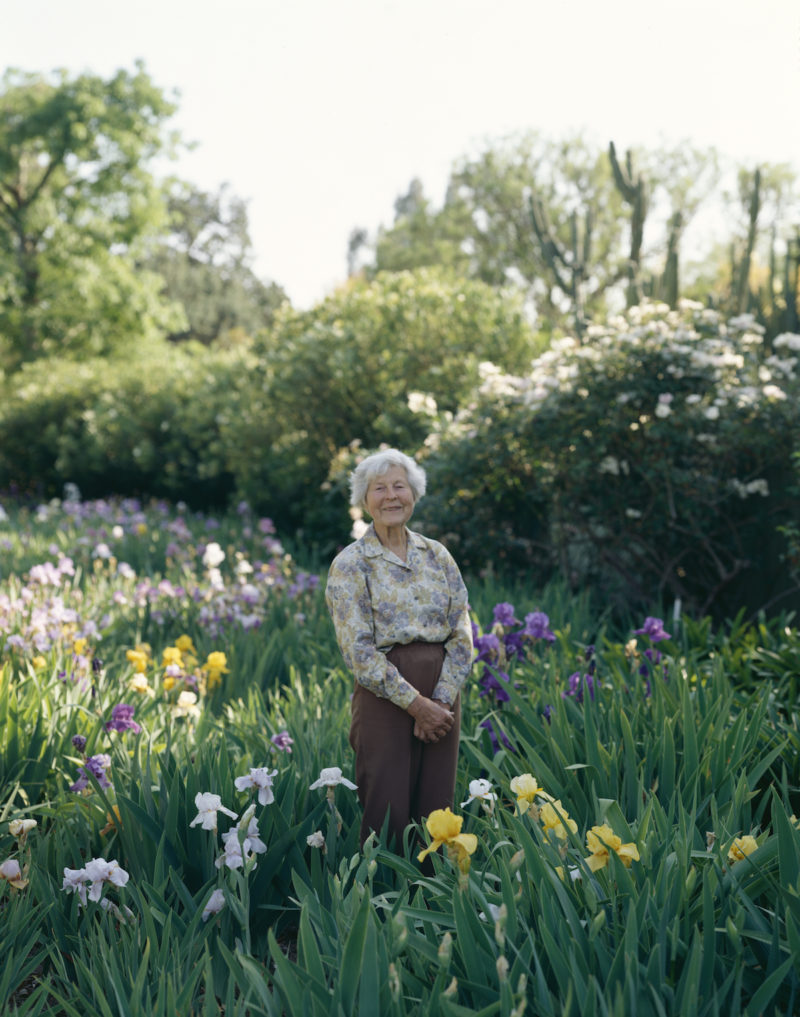Welcome to Workman’s #30DaysofGiving! This holiday season, we will be excerpting from some of our favorite books of the year and giving readers the chance to win a copy. Follow along by visiting our master digital advent calendar, and use the hashtag #30DaysofGiving on social media for daily updates.
THE BOLD DRY GARDEN by Johanna Silver (Day 25)
The following passage is excerpted from the book:
A Dry Climate

Ruth Bancroft (Photo © Marion Brenner)
Walnut Creek, California, has always been a dry-summer Mediterranean climate with no precipitation in the warmer months. The town’s population boomed after the Second World War, when railroads, real estate developers, and municipalities sold California as a state of abundance filled with rich soil, sunshine, and water for everyone. Many believed it was a good thing that the state population was growing and that dams would be sufficient for providing enough water for farmers, industry, and residents. Concepts like drought or regionally appropriate landscaping were far from the mainstream consciousness. As suburban development closed in on her husband’s historic family farm with single-family homes and green lawns, Ruth unintentionally created a model of dry gardening on the little patch of land they still possessed.
California residents are waking up with what feels like a collective hangover from the idea of turf as status quo, which is a long-outdated metric of affluence. We are becoming aware of just how wasteful our landscapes are. California is the only Mediterranean climate–region in the world in which lawns are the norm, and these could not be more of a regional mismatch, as the grass needs regular irrigation during the season when no rain falls. The figures are stark. As much as 70 percent of the water flowing to California’s cities and suburbs is used to support gardens and outdoor features. The typical suburban lawn in California uses as much as 45,000 gallons of water per year to irrigate front and back yards, plus regular inputs of synthetic fertilizers and gas-powered mowers.
Yet we need our home gardens more than ever. New research suggests that the cultivated parts of suburbia actually support a surprisingly large amount of biological diversity that is otherwise losing its habitat. But it is critical that we cultivate a space in sync with our regional environment. It is time to act as stewards rather than conquerors, and to understand that our yards and gardens are part of the natural environment, not distinct from it.

The bright pink fall bloom of commanding Ceiba speciosa. (Photo © Marion Brenner)
Long before this wake-up call (and without even knowing it), Ruth created a dynamic garden that responded to the logic of place. She constructed an ecologically sound garden and rehabilitated land that decades of ranching had compacted and decimated. The Great Depression forced Ruth to abandon her dreams of becoming an architect, but she was able to use her innate design skills in her garden. From spirals to rosettes, silver-green leaves to sharp spines, the dry plant palette is bold, structural, and anything but understated. Ruth has proven that a xeric garden can be lush, welcoming, and full of hidden nooks and views—exactly what we are thirsty for in this changing climate.
Ruth was fearless in her approach to gardening. Although she nearly lost her entire collection to a freak cold spell the first winter it was in the ground, she started over immediately—but never played it safe with her choices. She had a strong case of zone denial; an unwillingness to be limited by a few degrees of cold. She tried anything she fancied, and went to great lengths to protect plants during winter.
In addition to horticultural experimentation, the Ruth Bancroft Garden also represents the first of its kind in garden preservation for the United States. While Ruth was content growing the garden just for herself, Frank Cabot, one of the world’s leading garden preservationists, had the foresight to recognize the space as uniquely American and worth protecting. In 1989, he established the Garden Conservancy, which is devoted to preserving unique and noteworthy private gardens and helping them convert to public ones. As of 2015 the organization has helped save or restore more than 80 gardens, and Ruth’s was its very first.
 About the Book:
About the Book:
A Publishers Weekly Best Book of 2016
Ruth Bancroft is a dry gardening pioneer. Her lifelong love of plants led to the creation of one of the most acclaimed public gardens, The Ruth Bancroft Garden in Walnut Creek, California. The Bold Dry Garden offers unparalleled access to the garden and the extraordinary woman responsible for it. In its stunningly photographed pages, you’ll discover the history of the garden and the design principles and plant palette that make it unique. Packed with growing and maintenance tips, profiles of signature plants for a dry garden, and innovative design techniques, The Bold Dry Garden has everything you need to create a garden that is lush, waterwise, and welcoming.
Buy the Book
Amazon | B&N | Indiebound | Workman
Still need help finding a gift? Message our Holiday Hotline for personalized suggestions.







No Comments